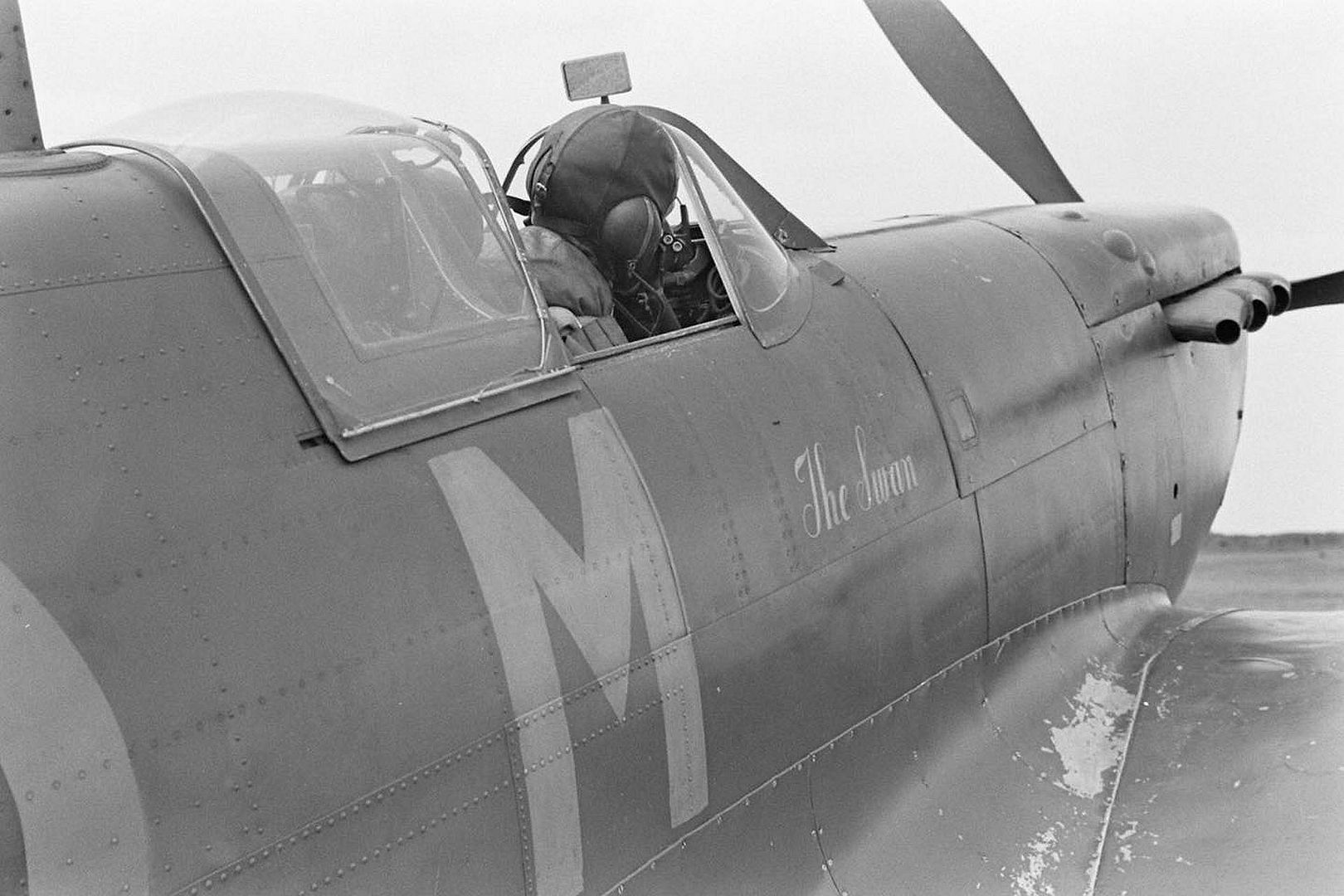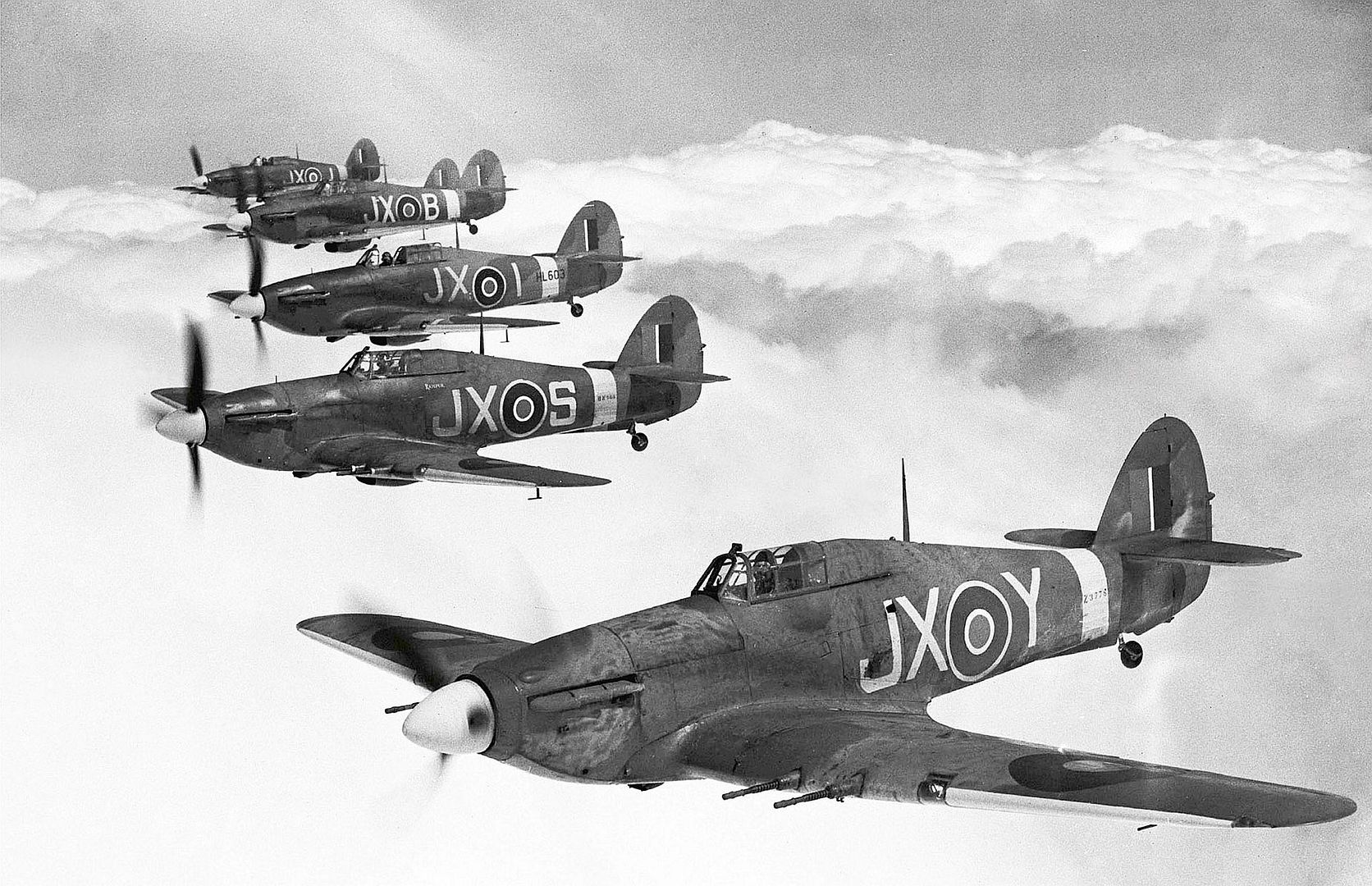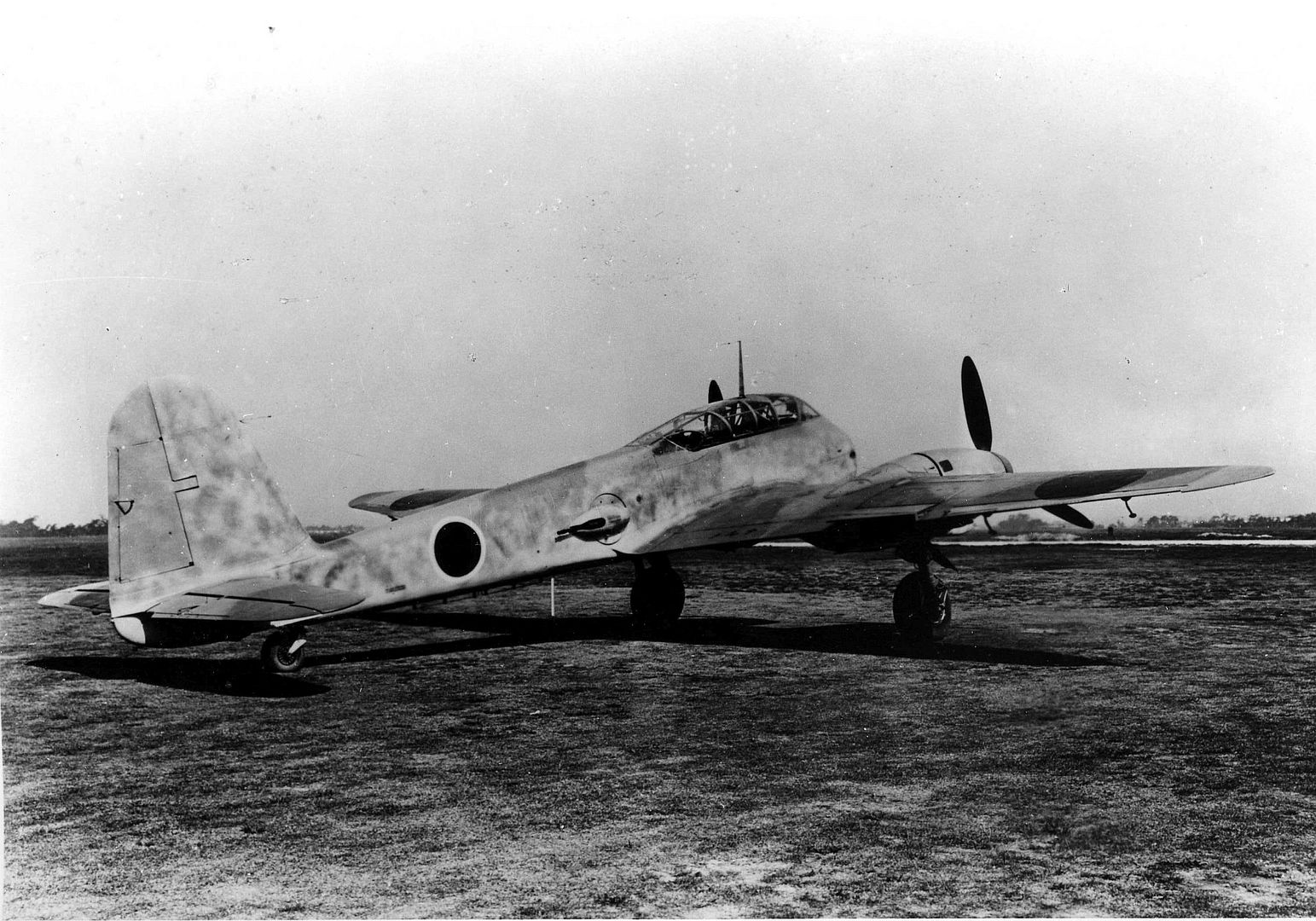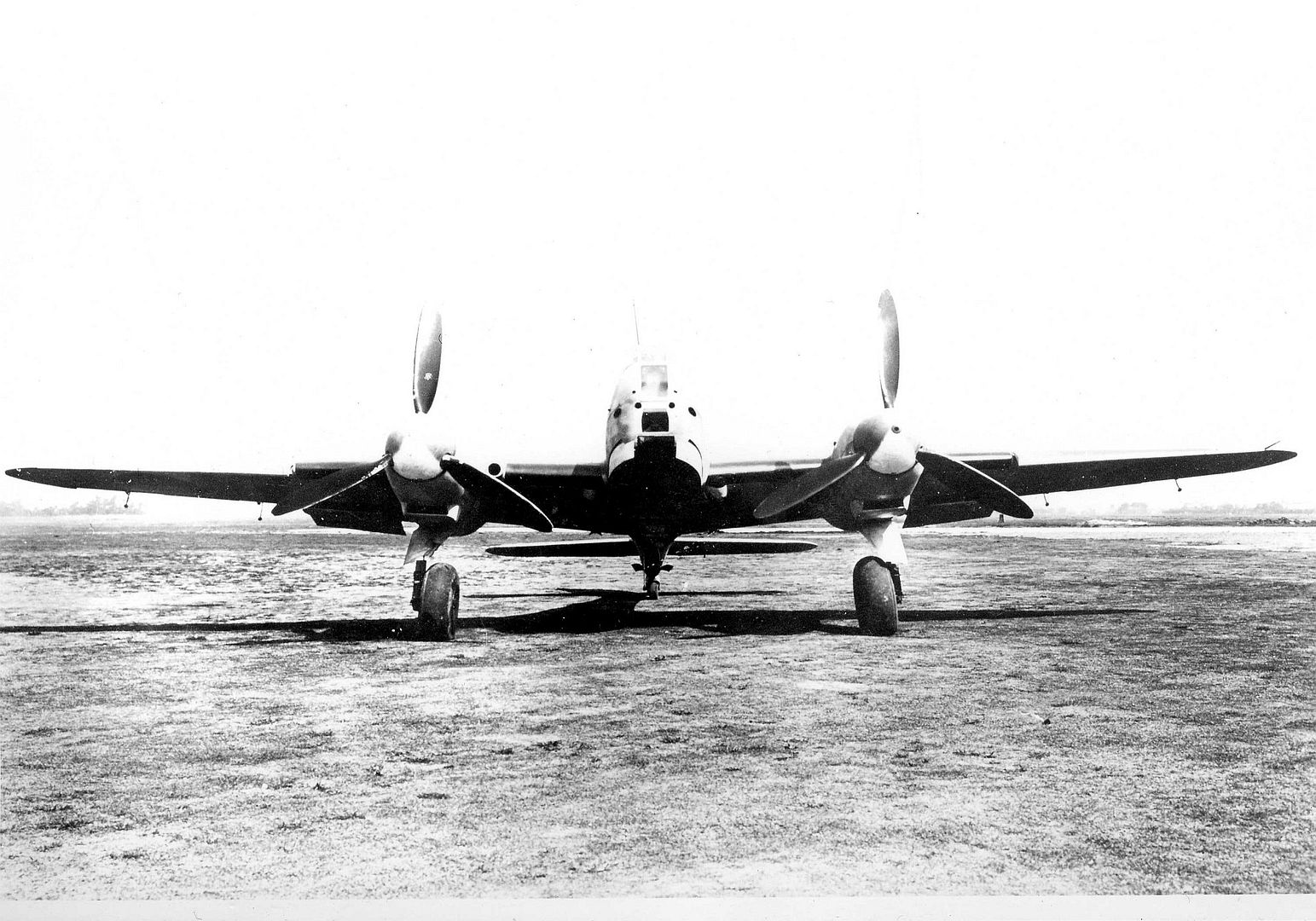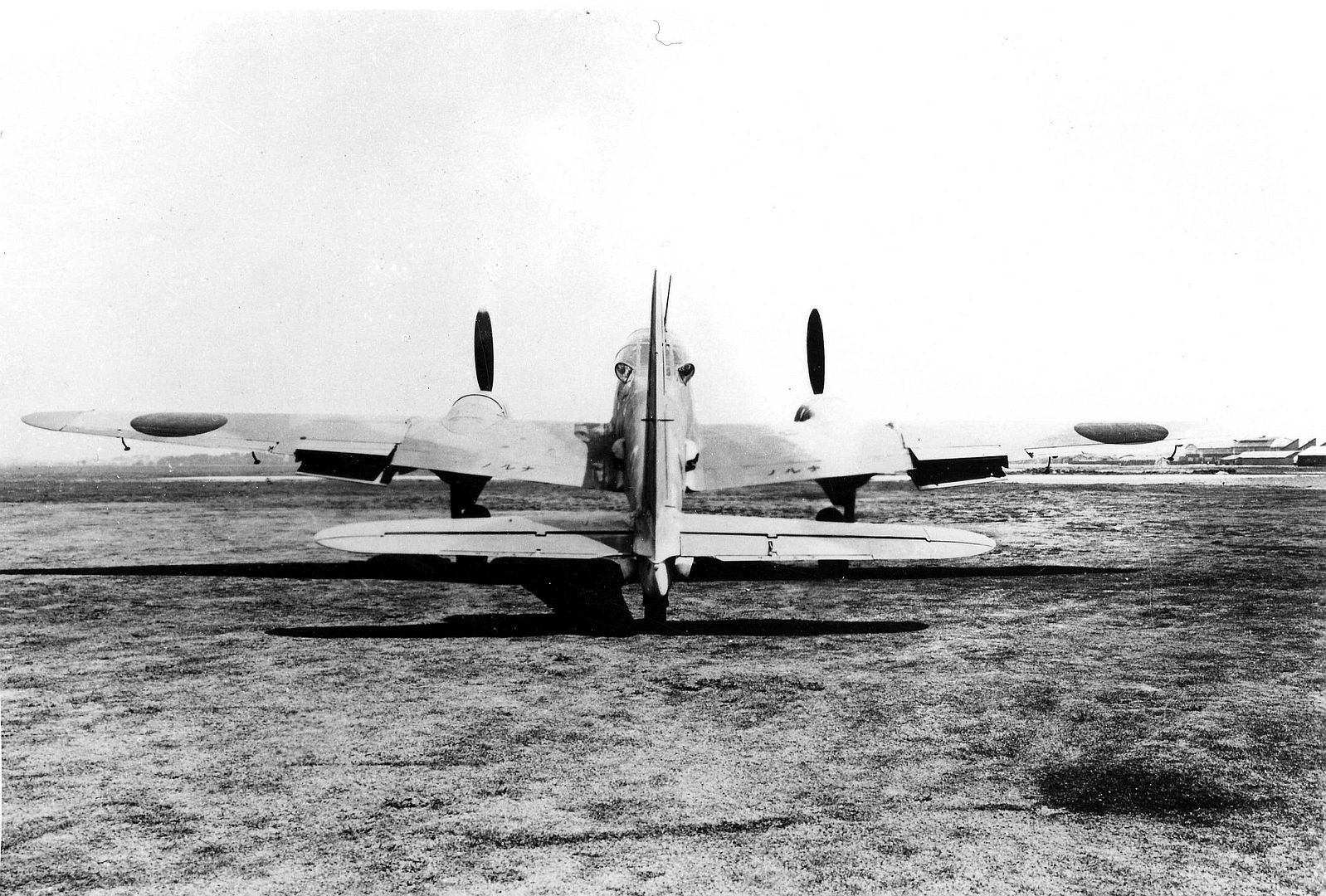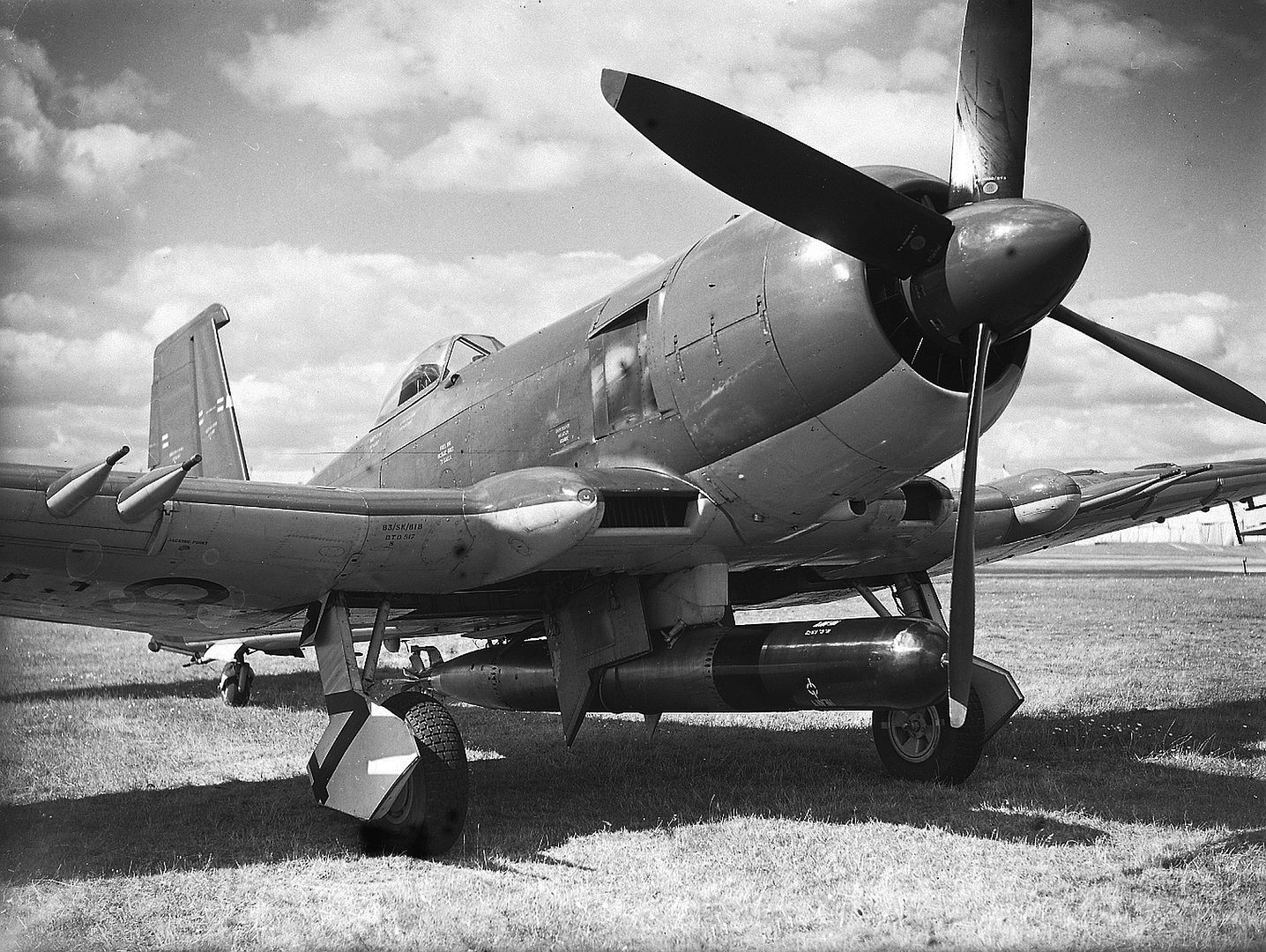Forums
- Forums
- Axis And Allies Forum
- General Discussion
- Photo of the week
Photo of the week
Post a reply
- Go to Next topic
- Go to Welcome
- Go to Introduce Yourself
- Go to General Discussion
- Go to Screenshots, Images and Videos
- Go to Off topic
- Go to Works in Progress
- Go to Skinning Tips / Tutorials
- Go to Skin Requests
- Go to IJAAF Library
- Go to Luftwaffe Library
- Go to RAF Library
- Go to USAAF / USN Library
- Go to Misc Library
- Go to The Ops Room
- Go to Made in Germany
- Go to Campaigns and Missions
- Go to Works in Progress
- Go to Juri's Air-Raid Shelter
- Go to Campaigns and Missions
- Go to Works in Progress
- Go to Skinpacks
- Go to External Projects Discussion
- Go to Books & Resources
-
4 years agoSun Oct 17 2021, 01:58pmDuggy
 Main AdminThis weekends extra.
Main AdminThis weekends extra.
The Supermarine Seafire Mk.Ib was a version of the Spitfire Mk.V converted to serve as an interim naval fighter before the arrival of a purpose-built Seafire.
The Admiralty had failed in an attempt to procure a naval version of the Spitfire I in 1940, but by 1941 it was clear that the Fleet Air Arm needed a modern fighter, and the Air Ministry agreed to release a number of Spitfire Mk.Is and 48 Mk Vbs. Two Spitfire Vs (AD205 and AD371) were sent to Worthy Down, where by the end of 1941 they had been equipped with arrestor hooks and catapult spools. By the end of 1941 a third Spitfire, BL676, had been sent to RNAS Arbroath, where it was given an A-frame arrestor hook, and was used for deck trails. It was joined by AD371 in February 1942.
BL676's next move was from Arbroath to the Air Service Training Unit, where it was converted into the first fully modified Seafire. This involved fitting it with catapult spools, slinging points, a tropical filter and a 30 gallon auxiliary fuel tank and strengthening the fuselage at key points. It already had an arrestor hook. The aircraft emerged on 23 March 1942 with a new name, Seafire (the name was suggested by the wife of one of the design team, and replaced Sea Spitfire), and a new serial number, MB328.
The Air Service Training Unit was given a contract to convert 48 Spitfire Vbs to the Seafire Ib standard, although without catapult spools (it isn't entirely clear if this includes MB328).
Cunliffe-Owen at Southampton, a Supermarine subcontractor, were given a contract to produce 118 Seafire Ibs, complete with catapult spools, bringing production up to 166 aircraft.
The Seafire Ib had a limited front line career. The first aircraft entered service in June 1942, and No.801 Squadron was fully equipped with the type by the time in embarked on HMS Furious in October 1942. No.842 Squadron also received a number of Seafire Ibs before joining the Furious in the summer of 1943.
The Seafire Ib was also used in small numbers by No.1 and No.2 Naval Fighter Schools, the School of Naval Warfare, RNAS Lee-on-Solent, RNAS Stretton, and No.760 (Reserve) Squadron.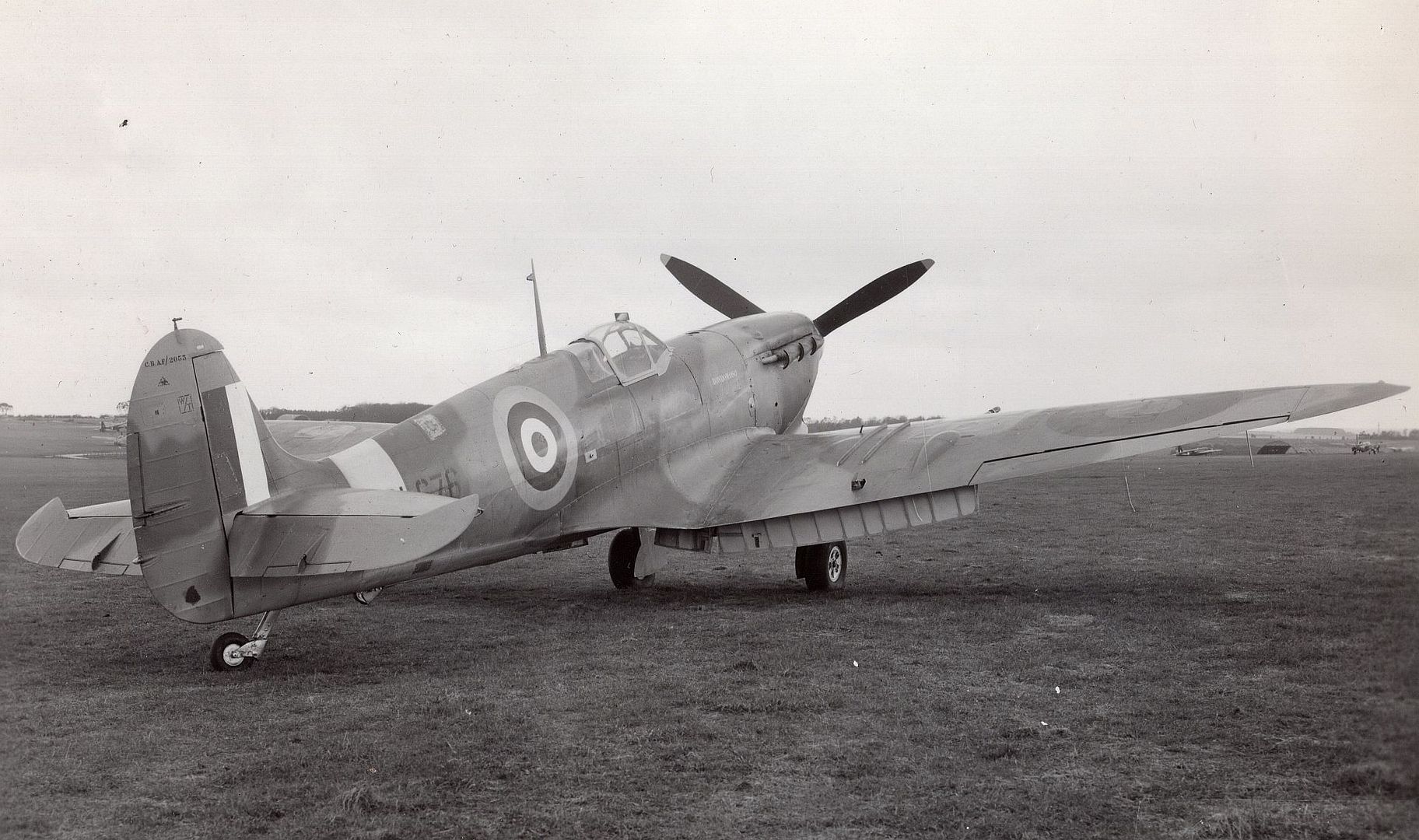
-
 Main Admin
Main Admin -
 Main Admin
Main Admin -
 Main Admin
Main Admin -
 Main Admin
Main Admin -
4 years agoSun Oct 31 2021, 09:39amDuggy
 Main Admin
Main Admin -
 Main AdminThis weekends extra.
Main AdminThis weekends extra.
No. 602 Squadron was formed on 12 September 1925 at Renfrew as a day bomber unit of the Auxiliary Air Force. Initially equipped with DH9As it began to replace these with Fawns in September 1927, though the latter were in turn replace by Wapitis in 1929. Harts began to arrive in February 1934 and the squadron re-equipped with Hinds in June 1936. On 1 November 1938 No 602 was redesignated an army co-operation squadron, but on 14 January 1939 this was changed to become a fighter unit, Gauntlets being received. These were replaced by Spitfire Mk I's in May 1939 and during the early months of the war the squadron was engaged in intercepting German bombing raids on Scotland. When the Battle of Britain began, No 602 was still in Scotland, moving south in mid-August.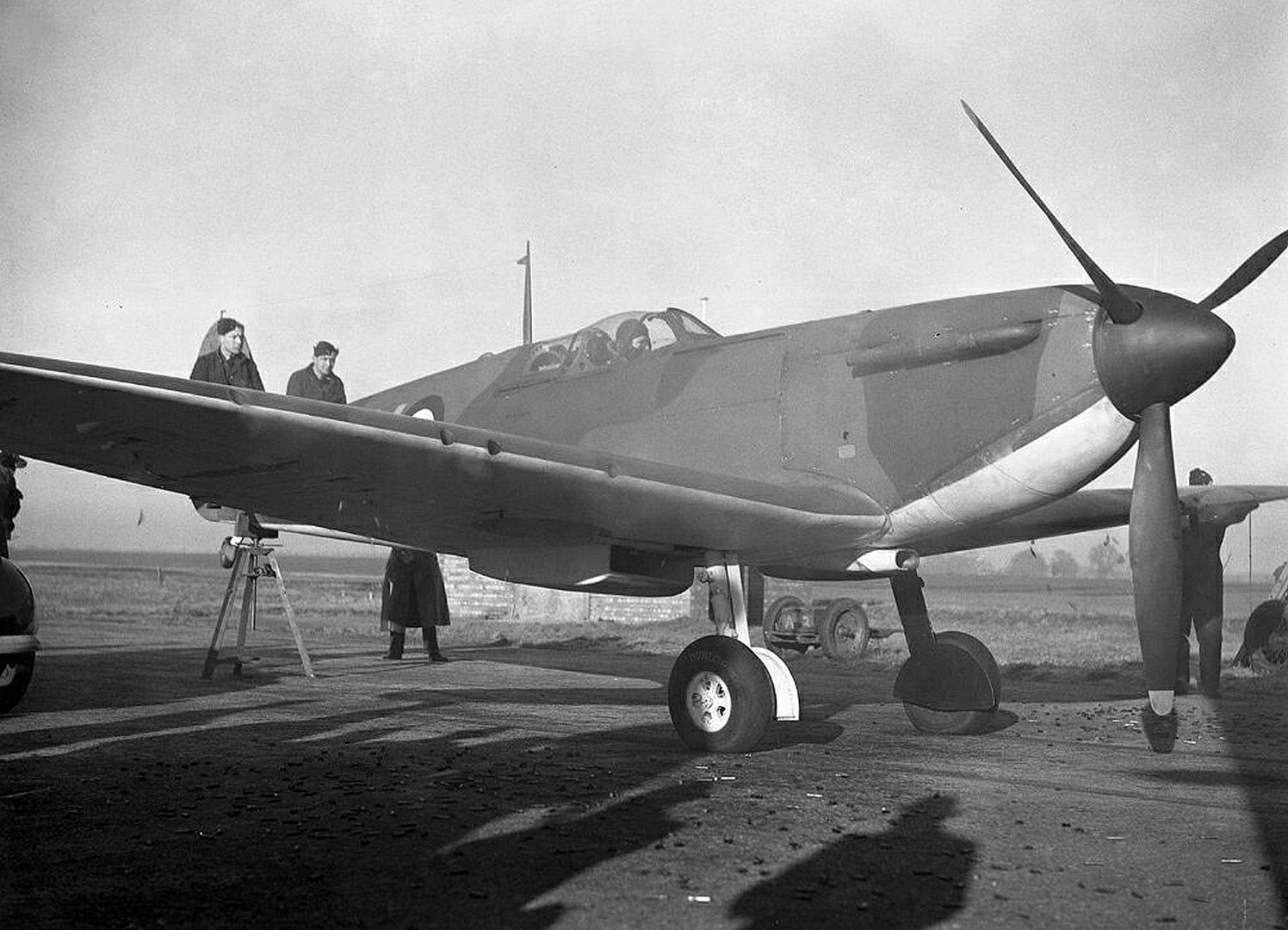
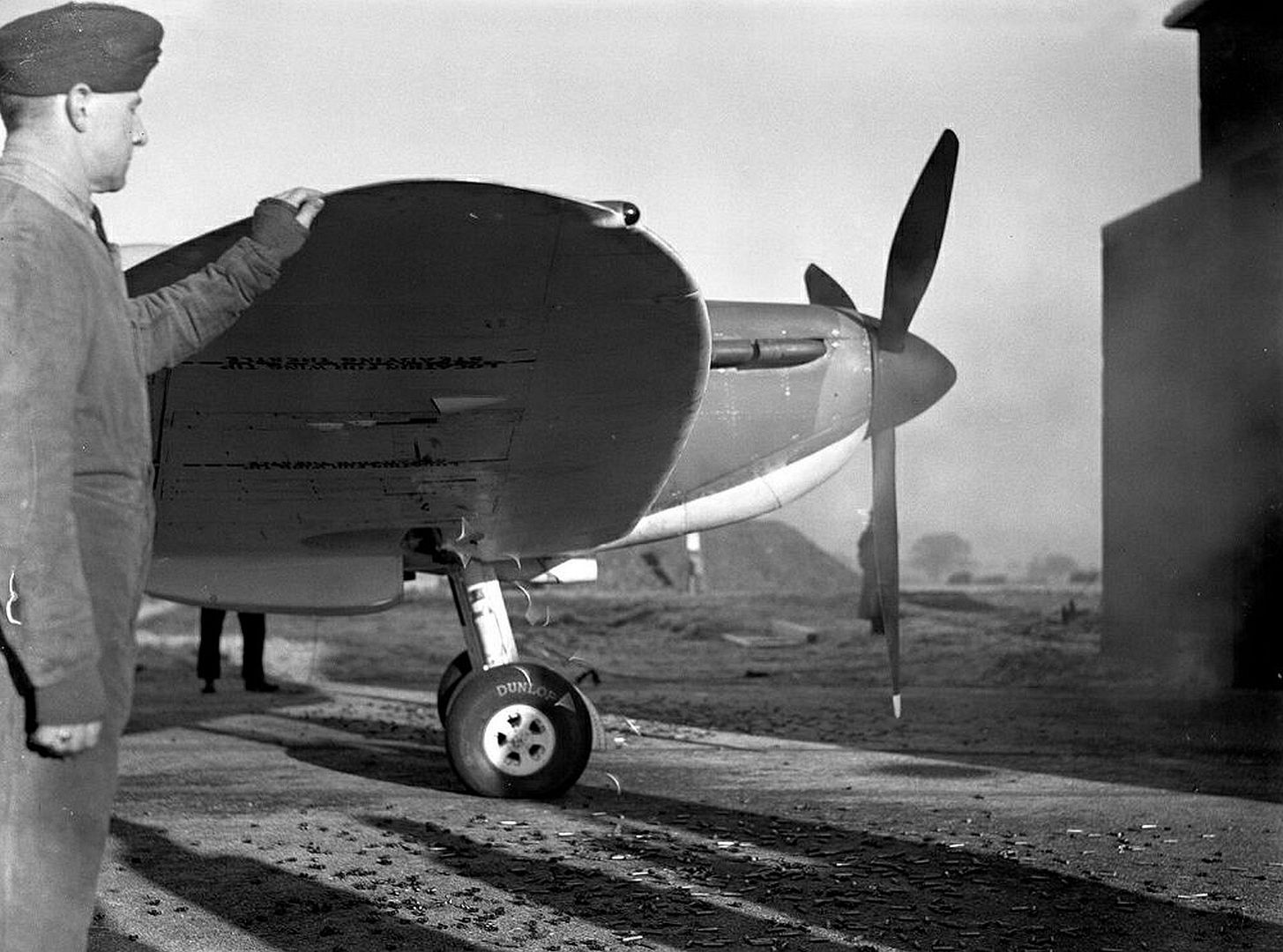
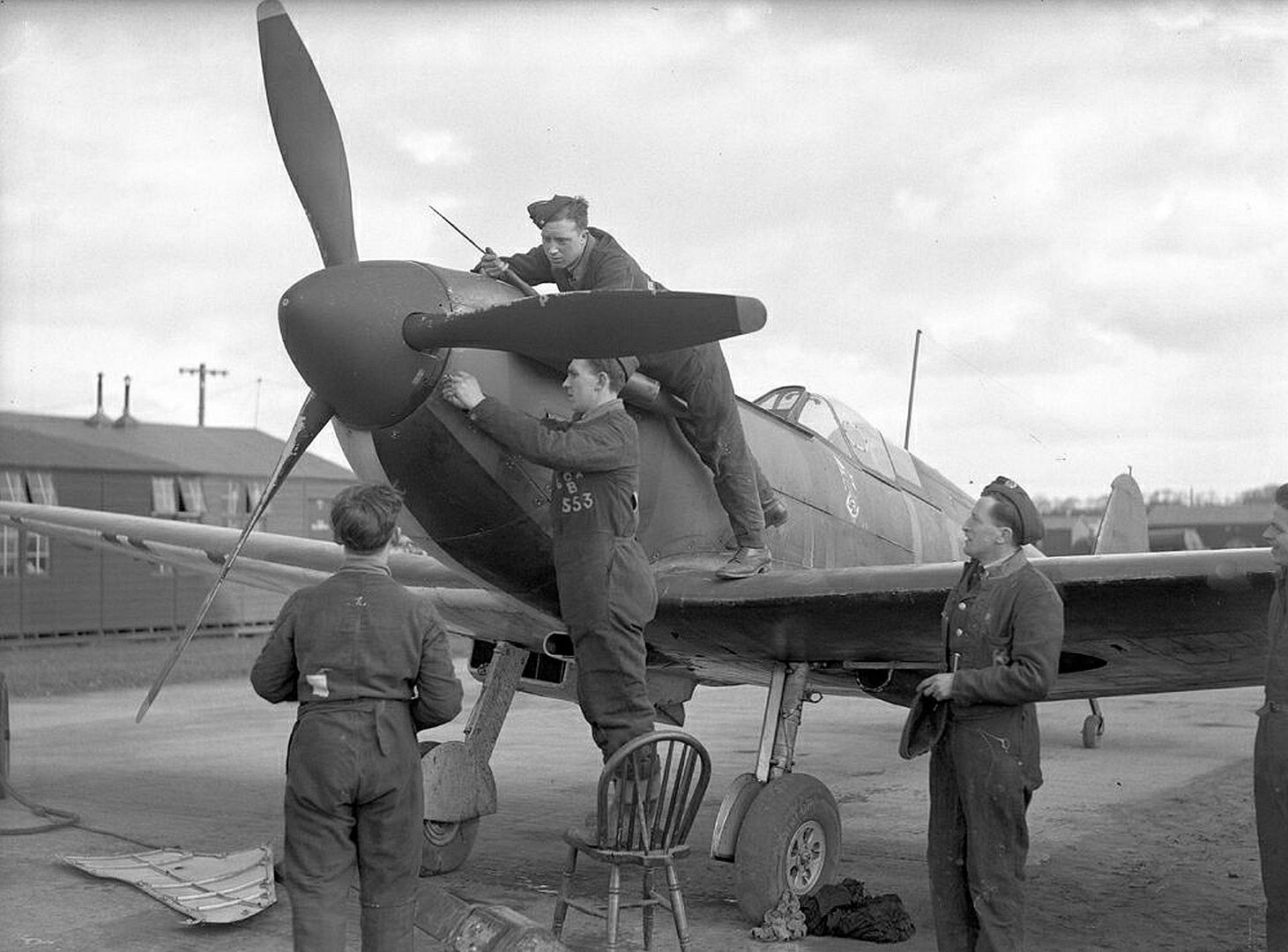
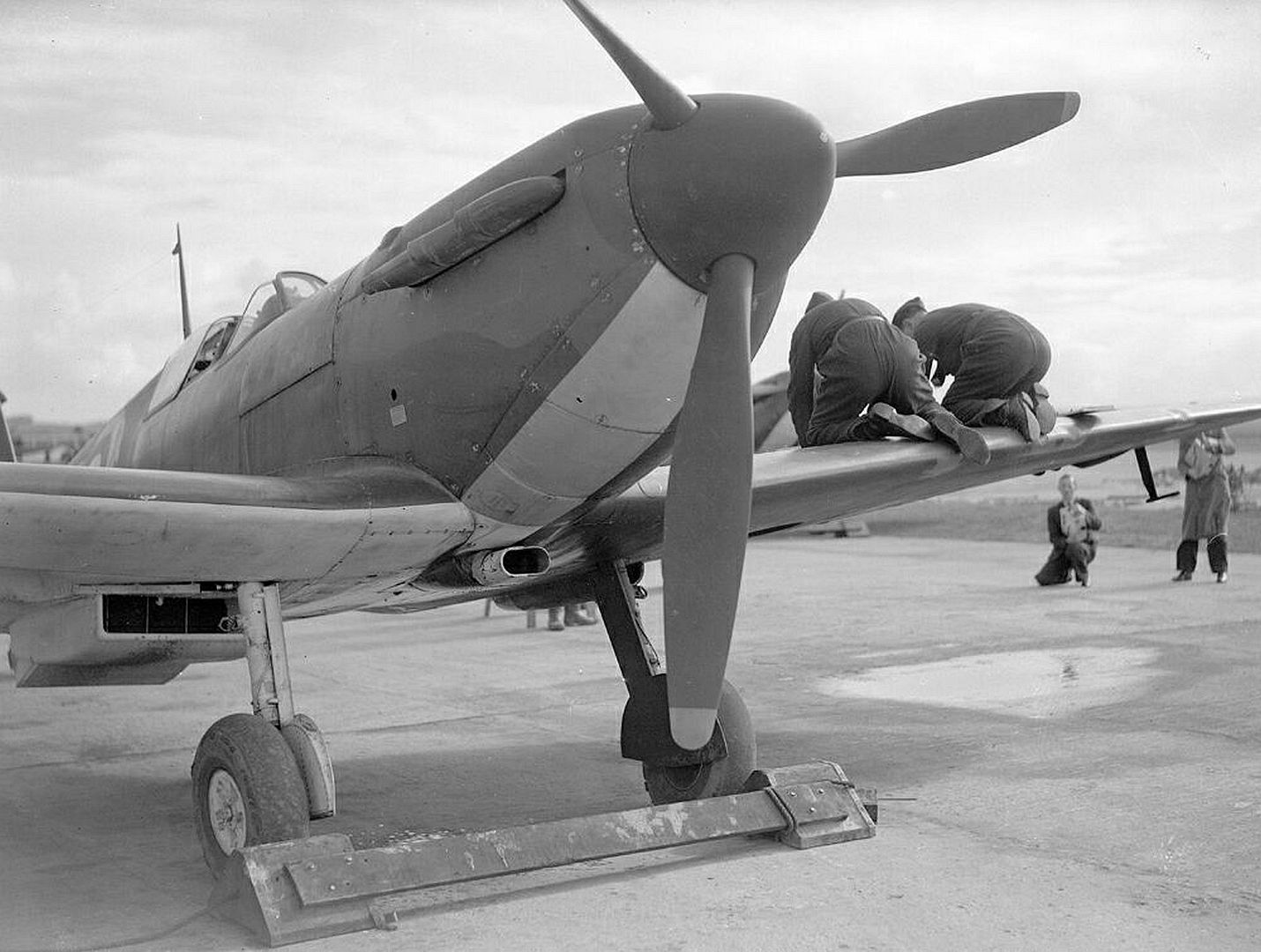
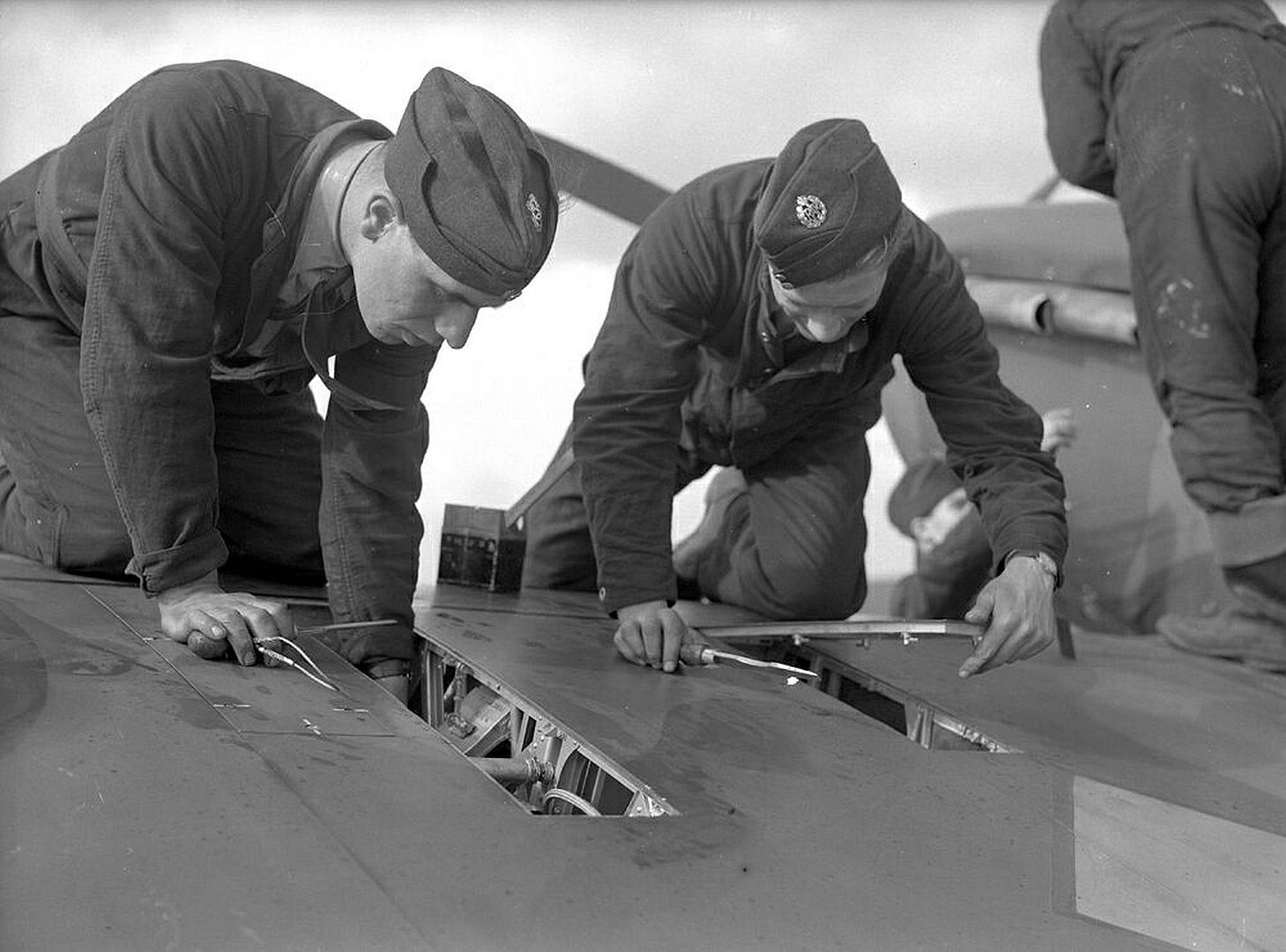
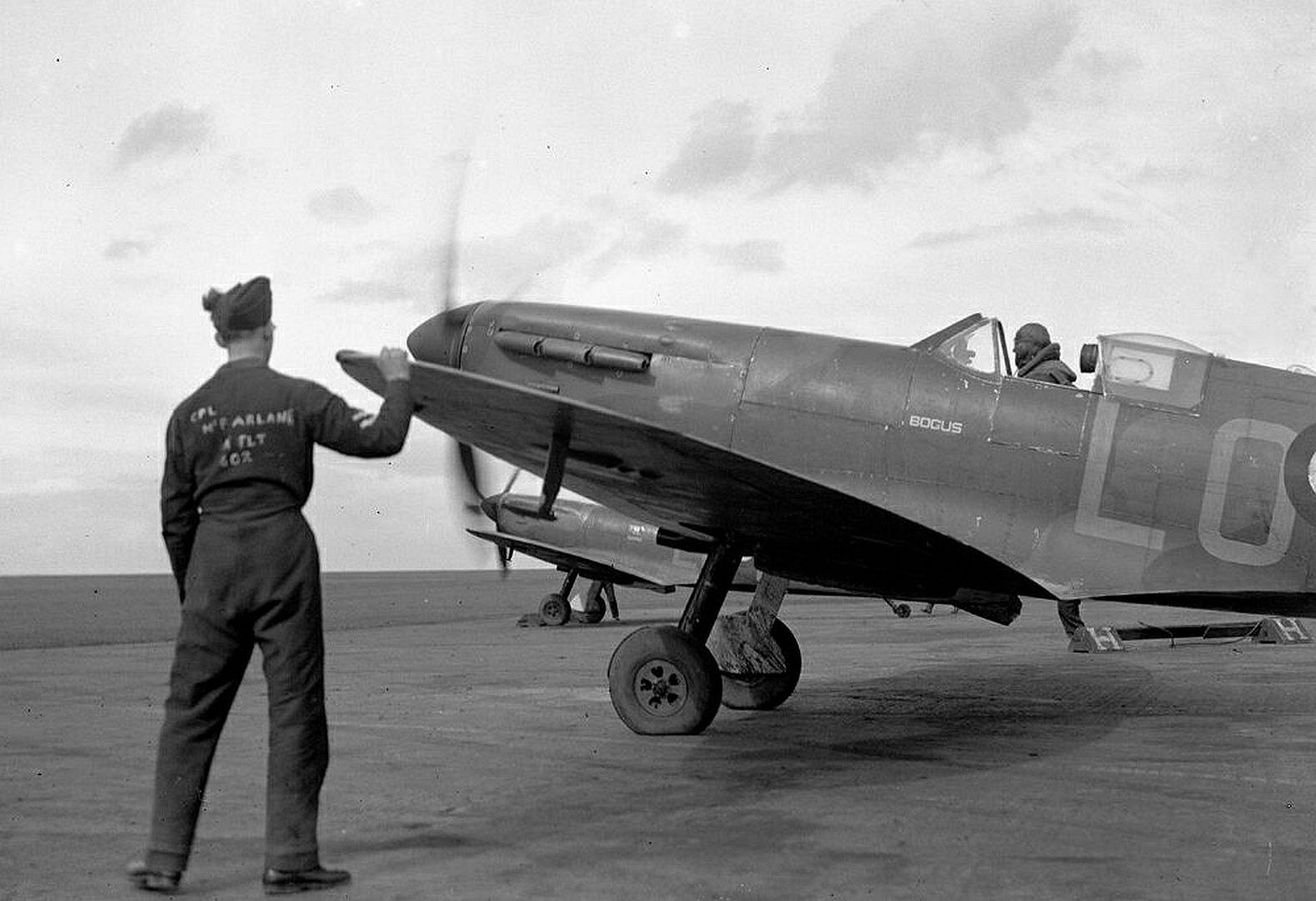
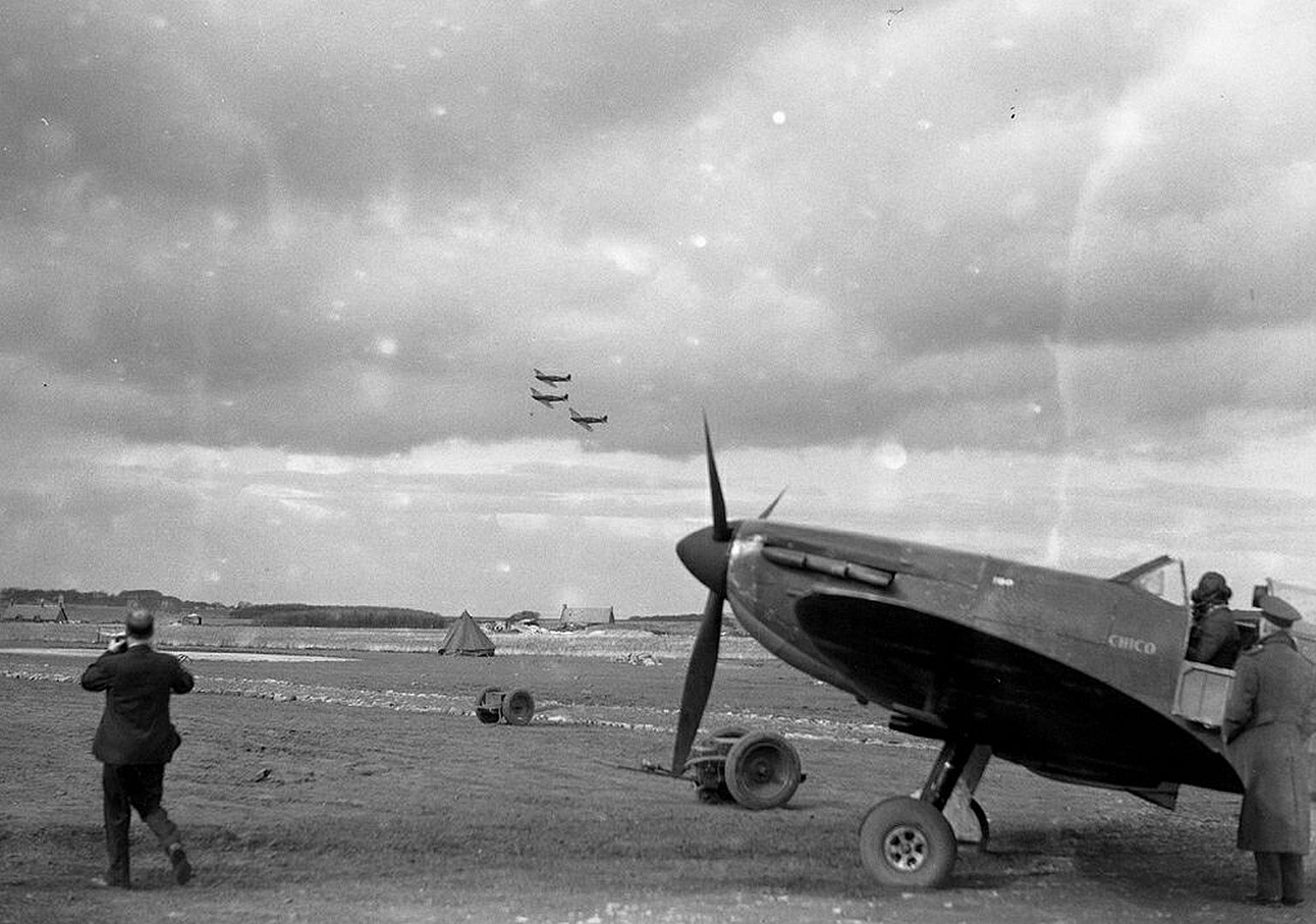

-
 Main AdminThis midweeks photos.
Main AdminThis midweeks photos.
Leon Swietlikowski served in the Polish Air Force, as well as the Polish squadrons attached to the French Air Force and Royal Air Force, during World War II.
Leon Lejek Swietlikowski was born on September 10, 1912 in Wilno, Poland to Kazimierz and Adolphina Swietlikowski. He worked as a pilot before joining the Polish Air Force at the onset of World War II. He flew in the September 1939 Campaign in Poland before fleeing to France to serve in the reassembled Polish Air Force there. Swietlikowski served in France from January of 1940 to June 21, 1940, whereupon he was forced to evacuate to the United Kingdom.
Swietlikowski joined the now twice-displaced Polish Air Force in Britain and came under command of the Royal Air Force (RAF) on July 1, 1940. The Polish squadrons fought in all the major campaigns, and Swietlikowski taught flying and also flew many missions over Europe as a bomber, reconnaissance pilot, and weather observer, including the missions to invade France on D-day. Swietlikowski served in the Polish Air Force in Britain until December 3, 1946.
While in Britain, he met his future wife, Elizabeth "Bette" Thomson Dale, who served in the RAF's Women's Auxiliary Air Force during the war. They wed in 1947. After living and working as a civilian in the United Kingdom for the next few years, Swietlikowski and his wife moved to America in 1951 and settled near Chicago. He died September 21, 1984.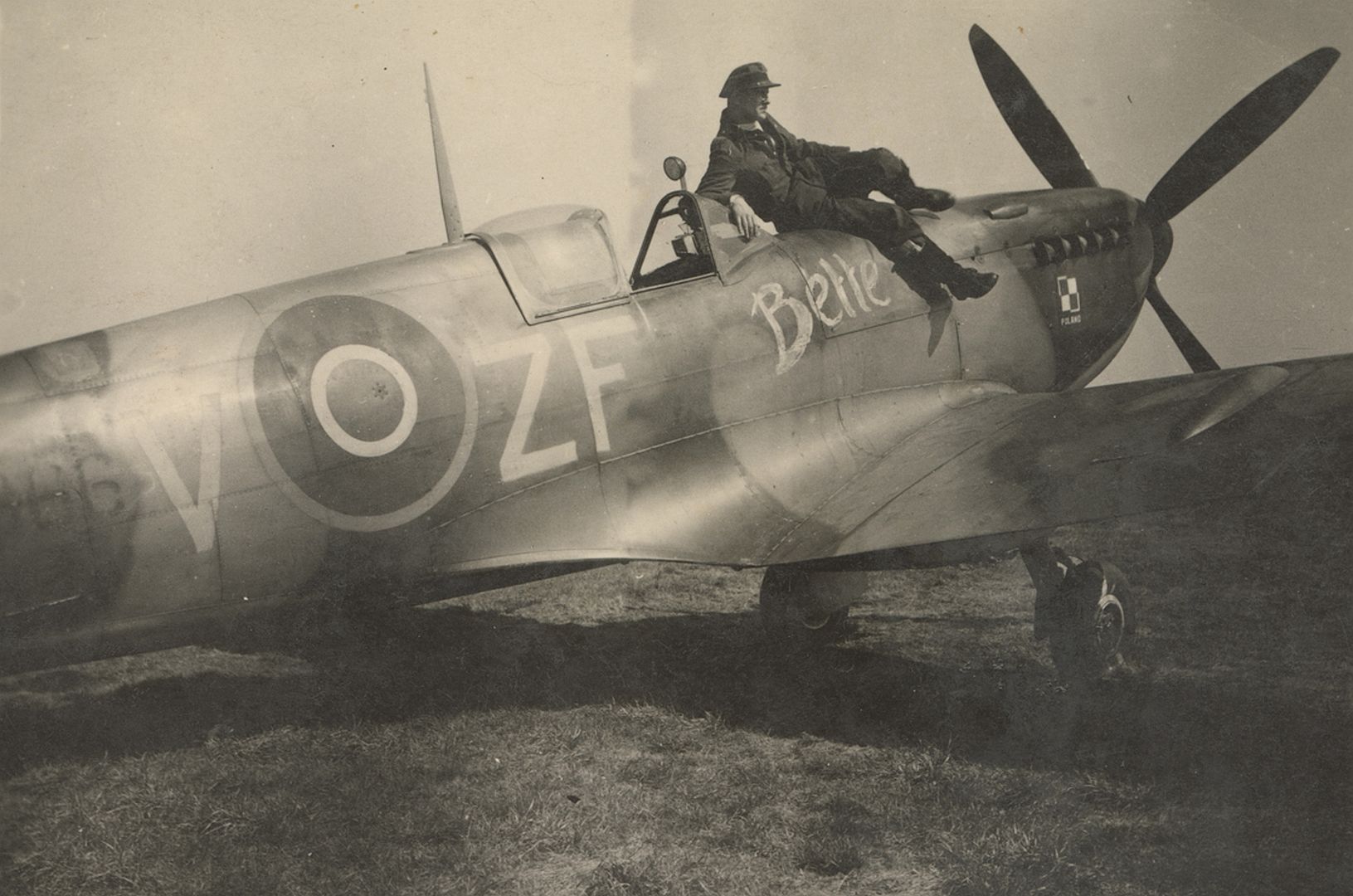
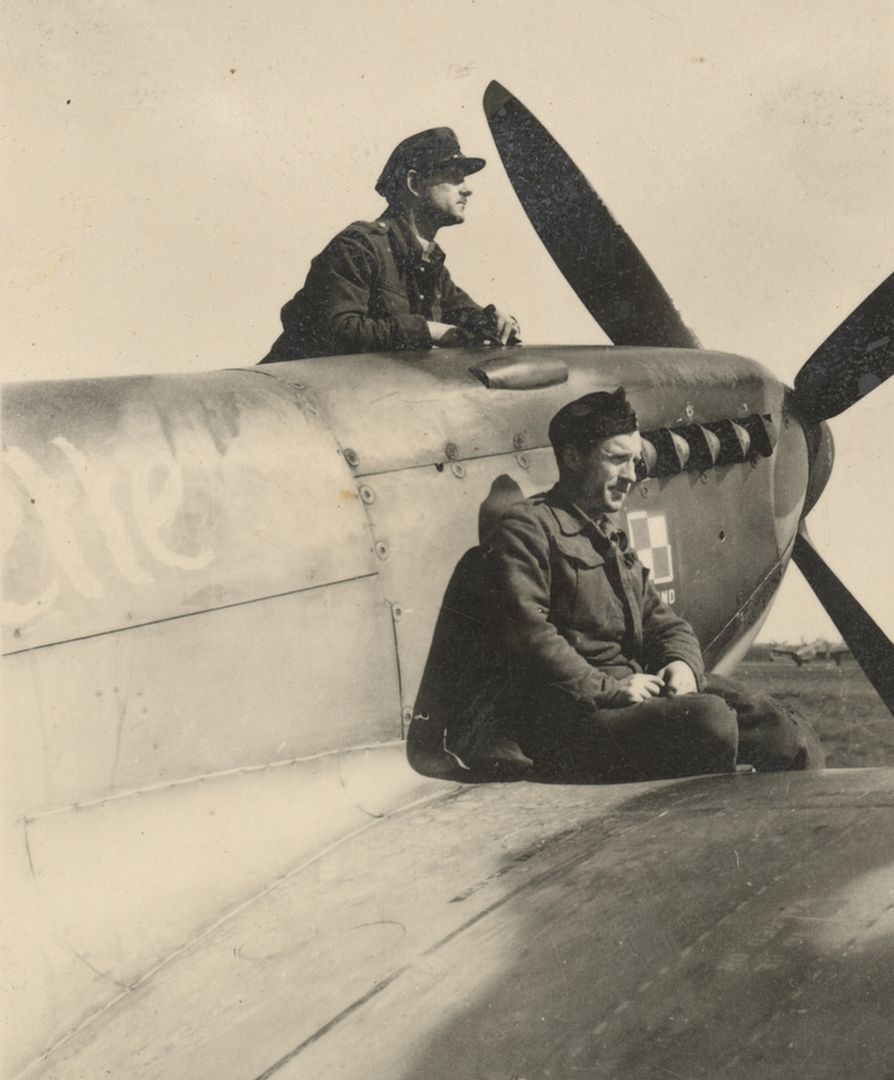
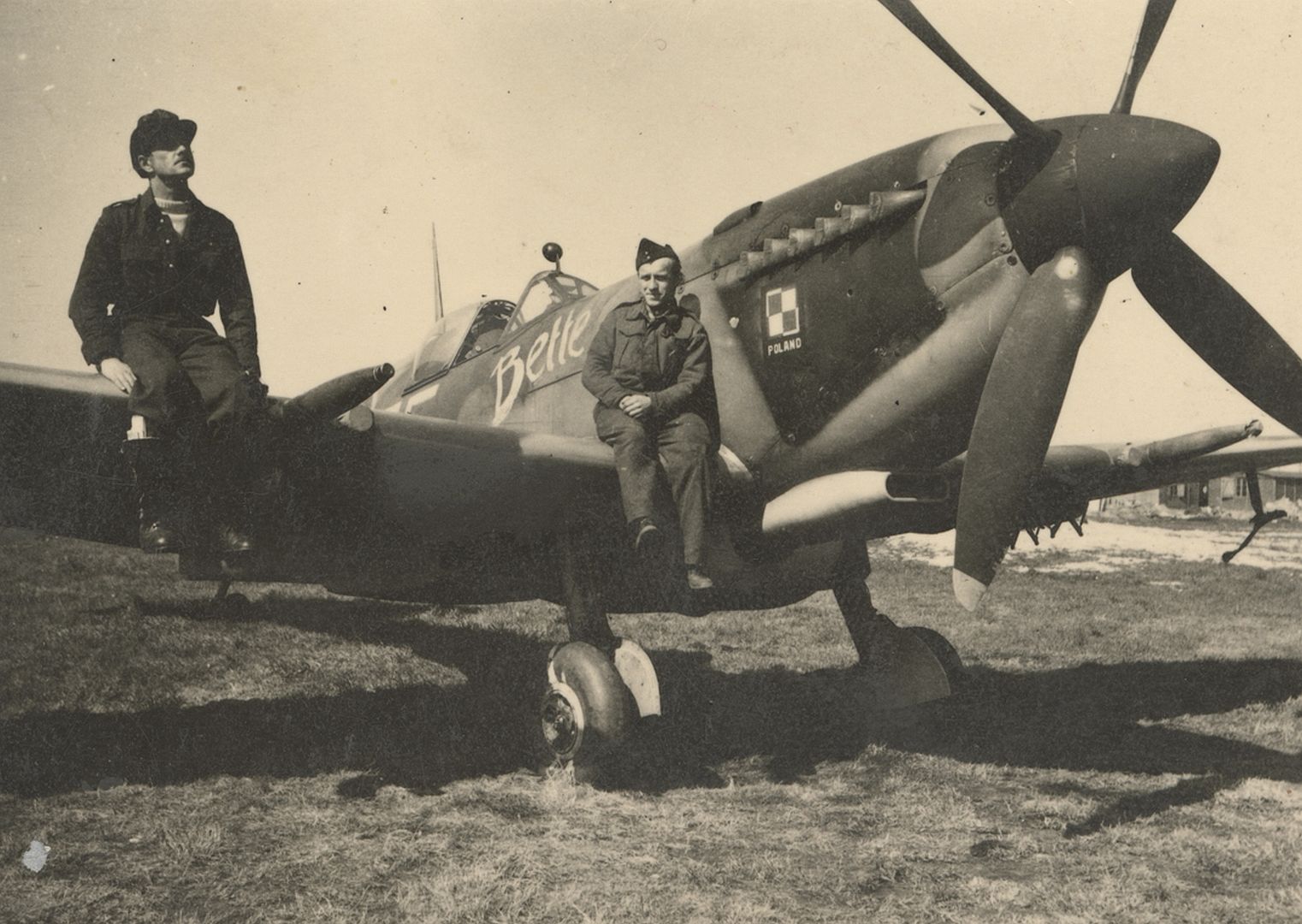

-
 Main AdminThis weekends photos.
Main AdminThis weekends photos.
The RAAF attempted to procure Sabres to replace No. 77 Squadron's Mustangs, but the priority being given to re-equipping the USAF meant that deliveries would not be possible until 1954. The Australian government agreed to purchase Gloster Meteor straight-wing jet fighters from Britain as the only viable alternative; the initial order included thirty-six single-seat Mk.8 interceptors and four two-seat Mk.7 trainers. No. 77 Squadron completed its last Mustang mission on 6 April 1951 and returned to Iwakuni the next day to begin converting to Meteors. It subsequently transferred to Kimpo, South Korea, and commenced operations with its new aircraft on 29 July. The squadron deployed twenty-two Meteors at Kimpo, and came under the control of the USAF's 4th Fighter-Interceptor Wing. Although it had operated effectively as a ground-attack unit with its Mustangs, No. 77 Squadron's primary role in the RAAF was interception, and it was expected that with the Meteor it could again focus on fighter duties, particularly as by this stage the USAF had only two squadrons of Sabres in the theatre.
(Below taken in Japan arriving by carrier.)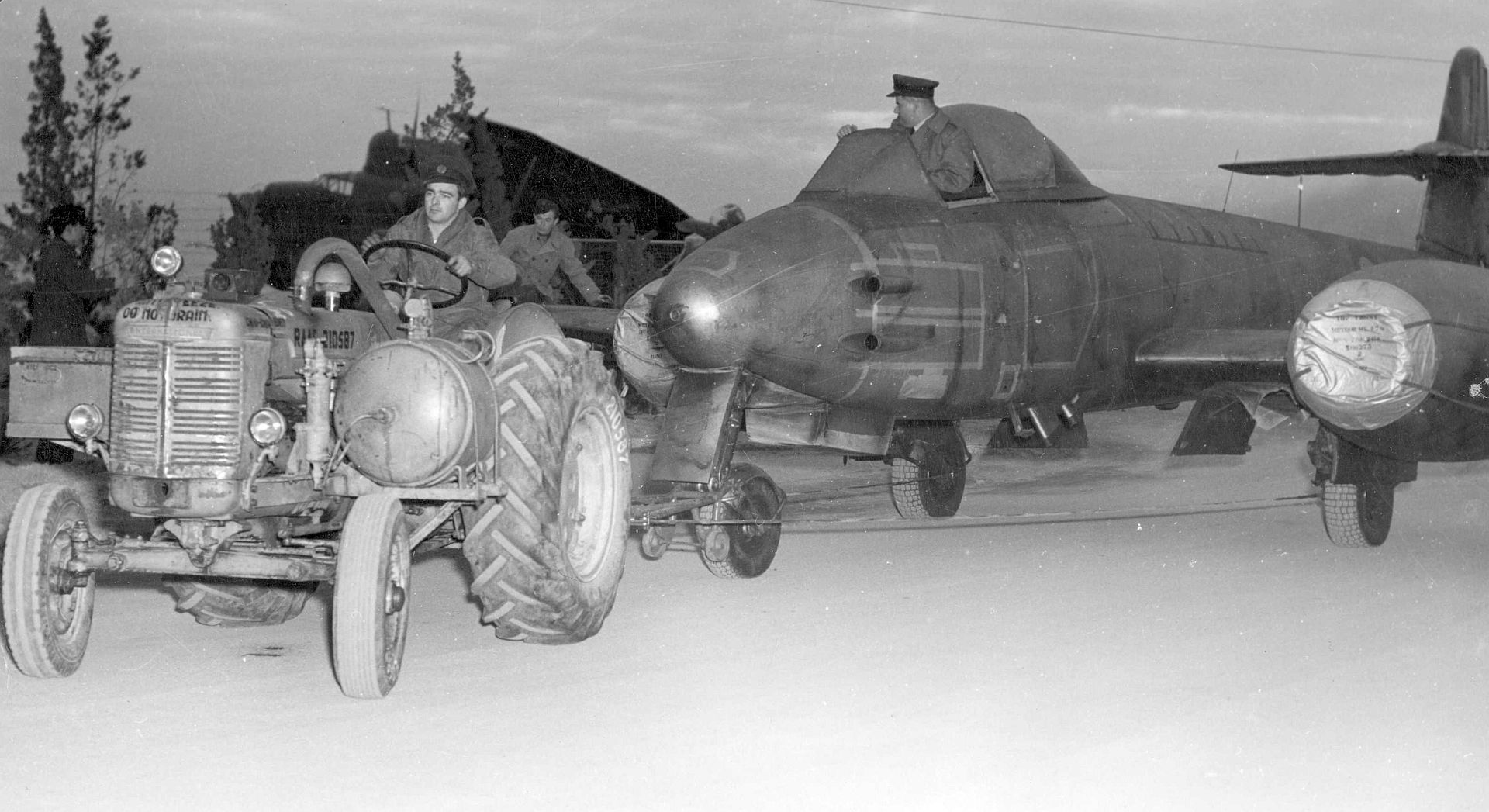
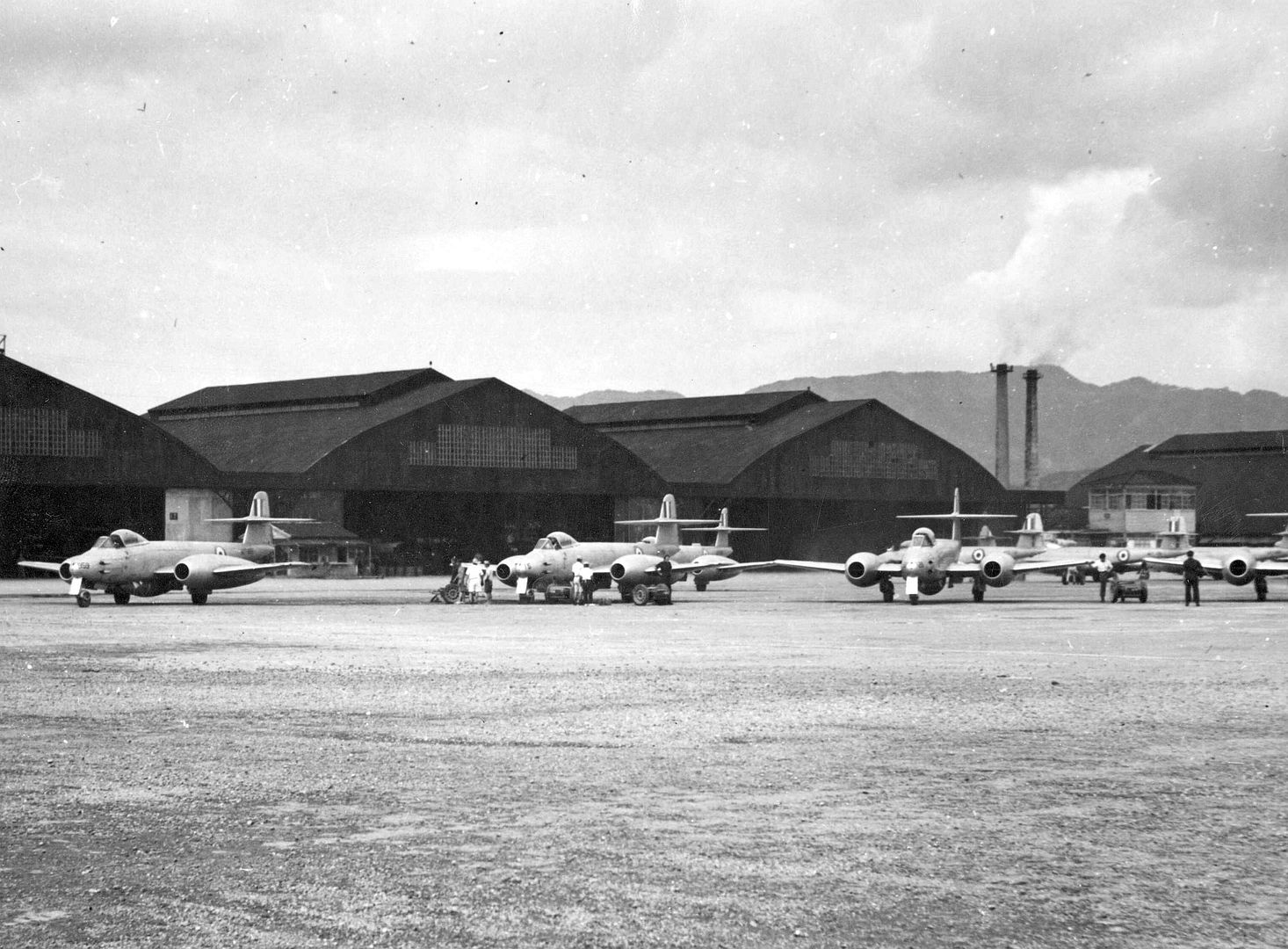
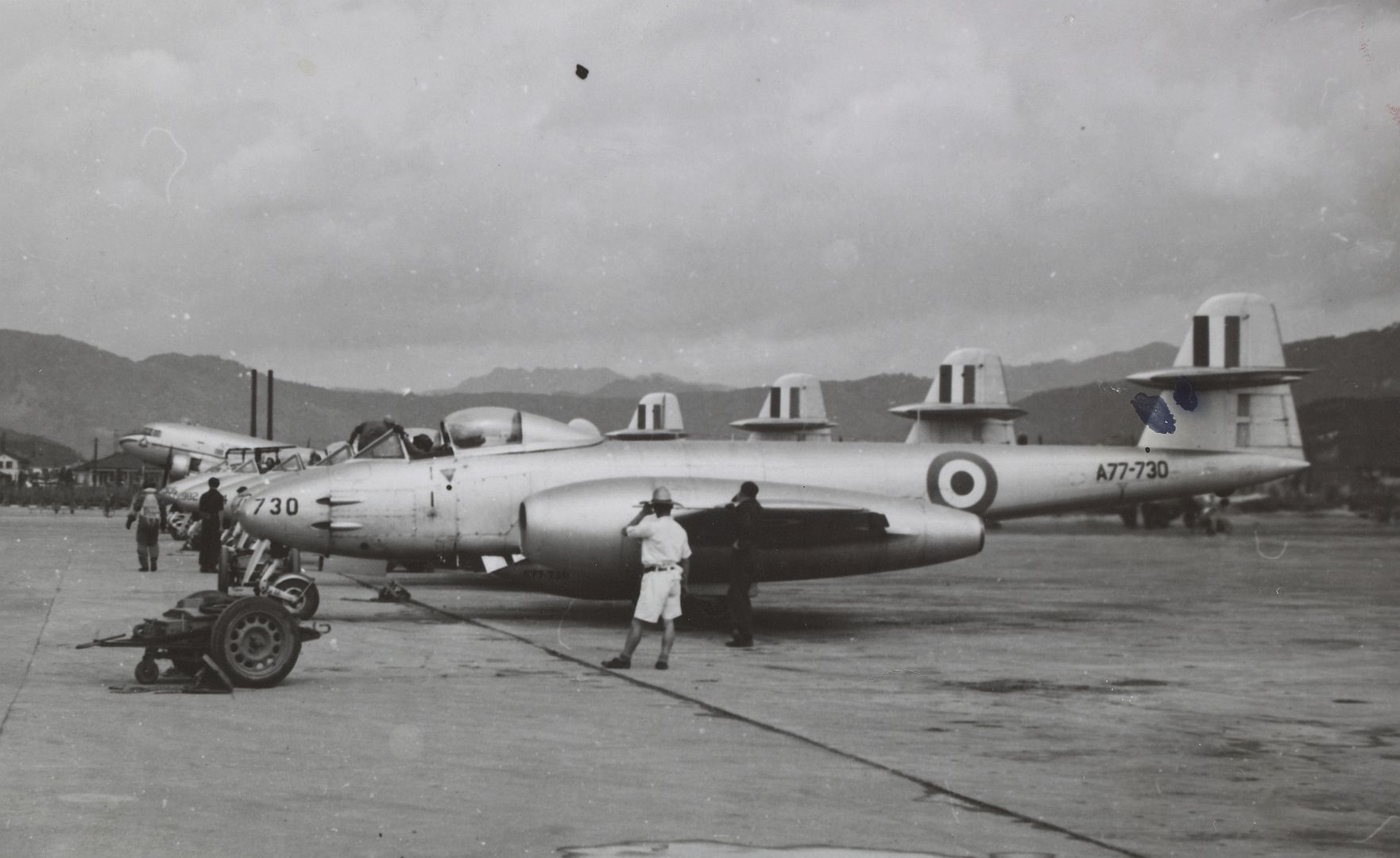
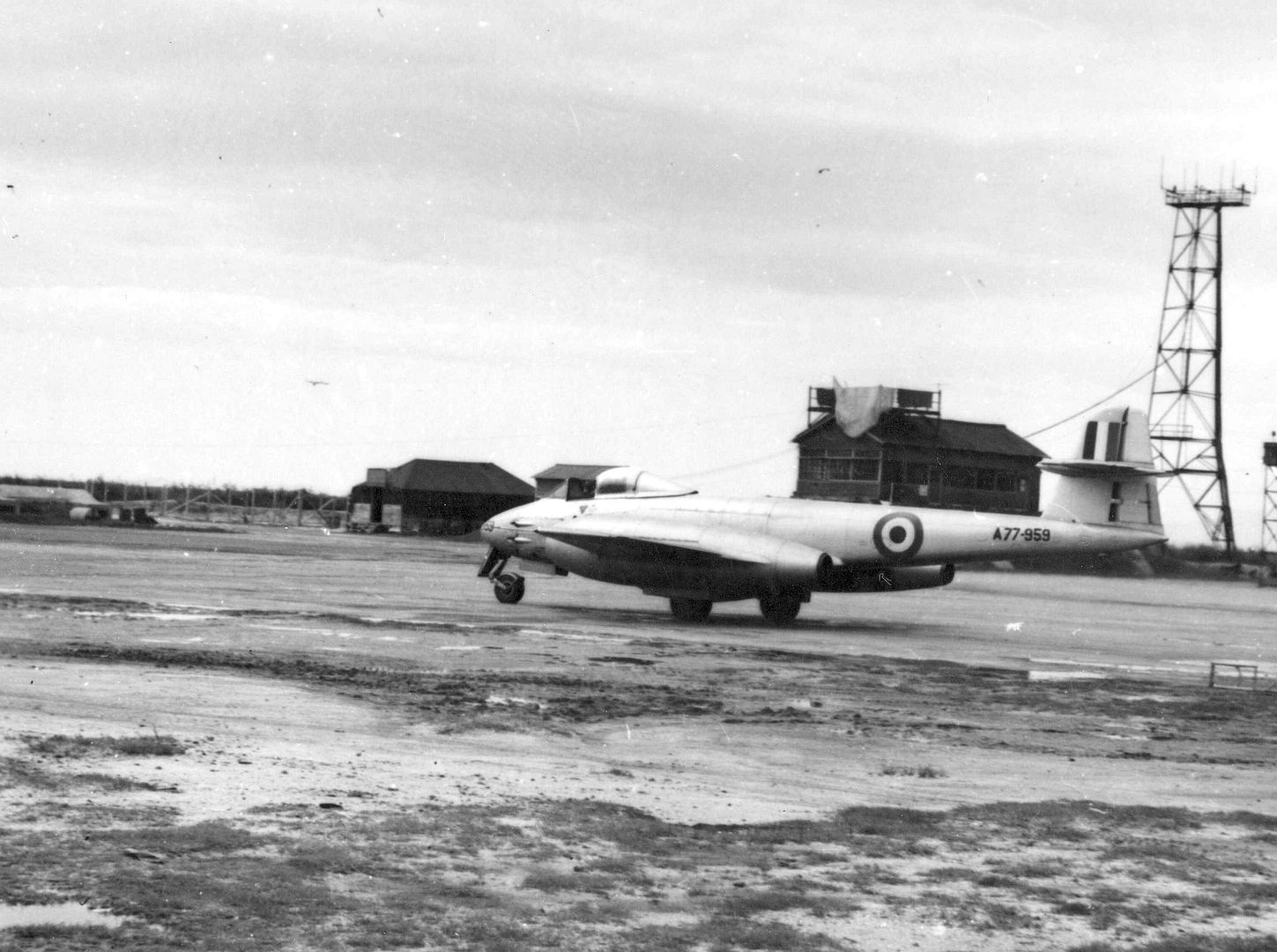
Wing Commander Gordon Steege succeeded Cresswell on 16 August 1951, by which time No. 77 Squadron's Meteors had conducted offensive sweeps up the Yalu River with USAF Sabres, and escorted Boeing B-29 Superfortresses on bombing missions. MiG-15s had appeared on several occasions without engaging the Meteors; it was speculated at the time, and subsequently confirmed, that they had been observing the performance of the newly arrived RAAF jets.No. 77 Squadron's first Meteor fatalities occurred on 22 August, when two aircraft collided in mid-air as they returned to Kimpo after a sweep. The Meteors first engaged MiG-15s on 25 August, but scored no hits. Four days later, eight Meteors and sixteen Sabres fought twelve MiGs; one RAAF pilot ejected when his aircraft was shot down, and a second Meteor was badly damaged. One week later another Meteor suffered severe damage in a dogfight with MiGs.As a result of these clashes, Steege became convinced that the Meteor was outclassed as a fighter. Following discussions with the Fifth Air Force, he decided to take No. 77 Squadron out of its air-to-air combat role and curtail its operations in "MiG Alley", the area between the Yalu and Chongchon Rivers on North Korea's border with Manchuria. This caused controversy among those who believed that proper tactics exploiting the Meteor's manoeuvrability and heavy armament would have allowed it to remain competitive as a fighter; for the Australian pilots the change of role amounted to a loss of prestige.The Chief of the Air Staff, Air Marshal George Jones, backed the decision, which relegated the squadron mainly to escort duty and local air defence. Morale suffered and it was not until Wing Commander Ron Susans succeeded Steege on 26 December 1951 that the Meteors were once more assigned an offensive role, namely ground attack.
In the intervening period, Flight Lieutenant "Smoky" Dawson registered No. 77 Squadron's first jet combat claim when he damaged a MiG during an escort mission near Anju, North Korea, on 26 September 1951. On 27 October, Flying Officer Les Reading was credited with damaging another MiG while covering B-29s over Sinanju; it was subsequently confirmed as having been destroyed, making it the squadron's first MiG "kill".The squadron was awarded the Republic of Korea Presidential Unit Citation for "exceptionally meritorious service & heroism" on 1 November. On 1 December 1951, over Sunchon, at least twenty Soviet-piloted MiGs from the 176th Guards Fighter Air Regiment (176 GvIAP) attacked a formation of fourteen Meteors. Both sides apparently overestimated the scale of the battle and the damage inflicted to their opponents: three Meteors—one flown by Pilot Officer Vance Drummond—were lost, but Soviet pilots claimed nine destroyed; Australian pilots claimed one MiG shot down and another damaged, from a formation of at least forty, though Russian sources suggest that all the MiGs returned to base and less than twenty-five were available to 176 GvIAP at the time.
On 8 January 1952, Susans led the squadron on its first ground-attack mission in Meteors, which were armed with eight rockets under the wings as well as their four internal 20 mm cannon, at Chongdan.They continued to operate mainly in the ground-attack role until the end of the war, but registered two more victories over MiGs near Pyongyang on 4 and 8 May 1952. The squadron took part in a mass air strike on 29 August, when 420 UN aircraft attacked Pyongyang. One Meteor was shot down and another damaged by MiGs following a ground-attack mission on 2 October 1952. The squadron played a leading role in the destruction of a large North Korean convoy on 16 March 1953: two Meteors discovered a line of some 140 vehicles in a mountain pass south of Wonsan, halted it by destroying trucks at the front and rear of the convoy, and then called in further support from Kimpo and the USAF. The Australian aircraft eventually claimed twenty-four trucks out of a total of ninety vehicles destroyed or damaged by UN forces. No. 77 Squadron was credited with downing its last MiG southeast of Pyongyang on 27 March.Squadron Leader Len McGlinchey became its final wartime fatality when his Meteor crashed while taking off from Kimpo on 16 July.
Following the signing of the Korean Armistice Agreement on 27 July 1953, the squadron remained in South Korea on garrison duties—initially at Kimpo, later at Kunsan—until transferring to Iwakuni on 12 October 1954. It departed for Australia on 19 November and arrived in Sydney on 3 December, having been based overseas for eleven years, a record for an RAAF unit. Its performance in the early days of the war has been cited as a factor in the United States' decision to ratify the ANZUS treaty in September 1951. The squadron's casualty rate in Korea was twenty-five percent killed or captured. Forty-one pilots died, thirty-five from the RAAF and six on exchange from the Royal Air Force. A further seven pilots became prisoners of war. Aircraft losses totalled almost sixty, including over forty Meteors, mostly to ground fire. The squadron flew 18,872 sorties, including 3,872 in Mustangs and 15,000 in Meteors. It was credited with shooting down five MiG-15s and destroying 3,700 buildings, 1,408 vehicles, ninety-eight railway engines and carriages, and sixteen bridges
(Below taken at Kimpo airfield Korea)
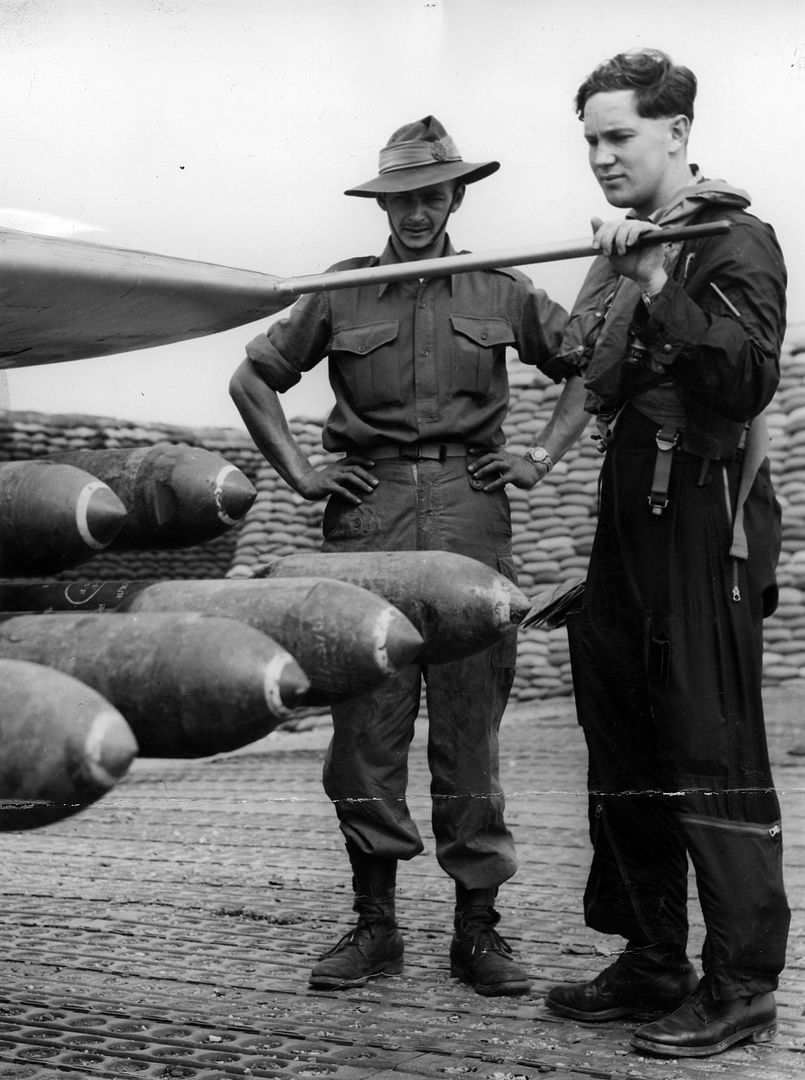
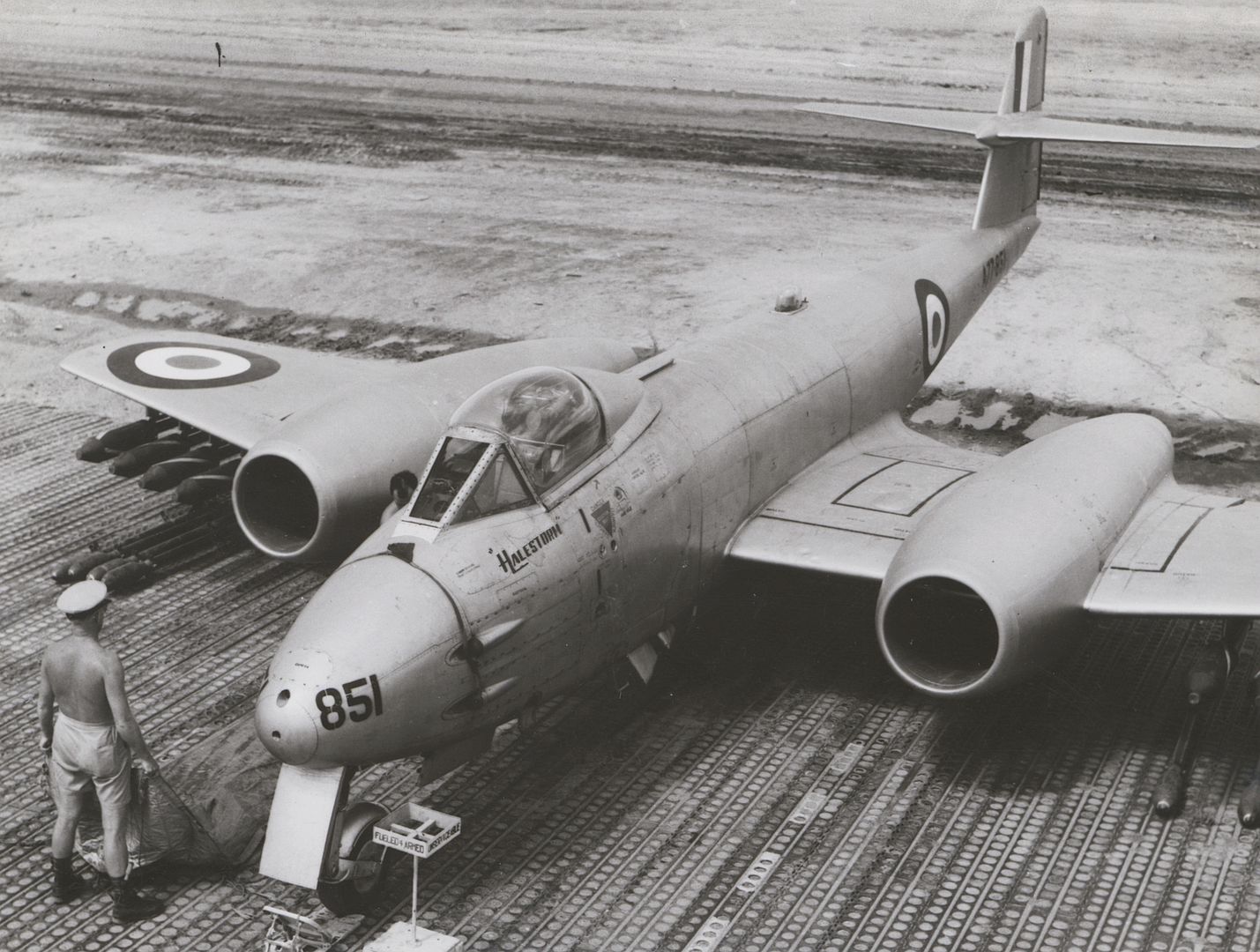

-
 Main AdminThis weekends extra.
Main AdminThis weekends extra.
Mustang Mk.III, (FX893) being used for armament trials at Boscombe Down, March 1944 . Note that the plane is equipped with unusual rocket rails, each capable of carrying a 27 kg (60 lb) SAP rocket above and below so that the single hard point on each wing could serve to launch two pairs of RPs.
Post a reply
- Go to Next topic
- Go to Welcome
- Go to Introduce Yourself
- Go to General Discussion
- Go to Screenshots, Images and Videos
- Go to Off topic
- Go to Works in Progress
- Go to Skinning Tips / Tutorials
- Go to Skin Requests
- Go to IJAAF Library
- Go to Luftwaffe Library
- Go to RAF Library
- Go to USAAF / USN Library
- Go to Misc Library
- Go to The Ops Room
- Go to Made in Germany
- Go to Campaigns and Missions
- Go to Works in Progress
- Go to Juri's Air-Raid Shelter
- Go to Campaigns and Missions
- Go to Works in Progress
- Go to Skinpacks
- Go to External Projects Discussion
- Go to Books & Resources
